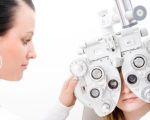- 1-Understanding-Eye-Strain-in-Digital-Artists
- 2-Key-Causes-of-Eye-Strain-for-Graphic-Designers
- 3-Practical-Strategies-to-Manage-Eye-Strain-Safely
- 4-Real-Life-Examples-and-Professional-Advice
- 5-Recommended-Products-and-Services-for-Eye-Care
1. Understanding Eye Strain in Digital Artists
Graphic designers and artists working digitally often spend extended hours in front of screens, which can lead to eye strain—a condition marked by dryness, headaches, blurred vision, and discomfort. Understanding the nature of this strain is the first step to managing it safely and effectively.
Digital eye strain, also called computer vision syndrome, results from prolonged focusing on screens with close-up detail and constant exposure to blue light. Unlike traditional artists, digital creatives face unique challenges that demand specific care routines.
1.1 Symptoms and Impact
Typical symptoms include eye fatigue, irritation, difficulty focusing, and even neck or shoulder pain due to poor posture. Left unmanaged, these issues can reduce productivity and impact overall well-being.
2. Key Causes of Eye Strain for Graphic Designers
Several factors contribute to eye strain in digital artists, making it important to recognize them:
2.1 Prolonged Screen Time Without Breaks
Hours of continuous focus on detailed images increase the eyes’ workload, leading to fatigue.
2.2 Poor Ergonomics and Lighting
Improper screen positioning, glare, or dim lighting can force the eyes to work harder.
2.3 Inadequate Blink Rate and Dry Eyes
When concentrating on screens, people tend to blink less, causing dryness and irritation.
3. Practical Strategies to Manage Eye Strain Safely
Effectively managing eye strain involves a combination of behavioral adjustments and environmental improvements:
3.1 Follow the 20-20-20 Rule
Every 20 minutes, look at something 20 feet away for at least 20 seconds. This simple habit relaxes eye muscles and reduces fatigue.
3.2 Optimize Your Workspace
Ensure your screen is positioned about an arm’s length away and slightly below eye level. Use adjustable chairs and desks to promote good posture, and minimize glare with proper lighting.
3.3 Use Blue Light Filters and Adjust Screen Settings
Many devices offer blue light reduction modes. Adjust brightness and contrast to comfortable levels to ease visual stress.
3.4 Maintain Proper Hydration and Blink Often
Consciously blinking more often and using artificial tears if needed helps prevent dryness.
4. Real-Life Examples and Professional Advice
Take the case of Emma, a freelance graphic designer who began experiencing headaches and blurred vision after long workdays. After consulting an optometrist, she incorporated regular breaks, invested in ergonomic furniture, and used screen filters. Within weeks, her symptoms significantly improved, illustrating how practical changes can protect eye health.
Experts emphasize personalized eye care and routine check-ups for digital artists, highlighting that early intervention prevents chronic issues.
5. Recommended Products and Services for Eye Care
For those seeking effective solutions, Eye Docs offers a range of products such as blue light blocking glasses, ergonomic accessories, and eye care supplements designed specifically for digital professionals. Their expert services also include personalized vision assessments to tailor the best eye health plan for you.








